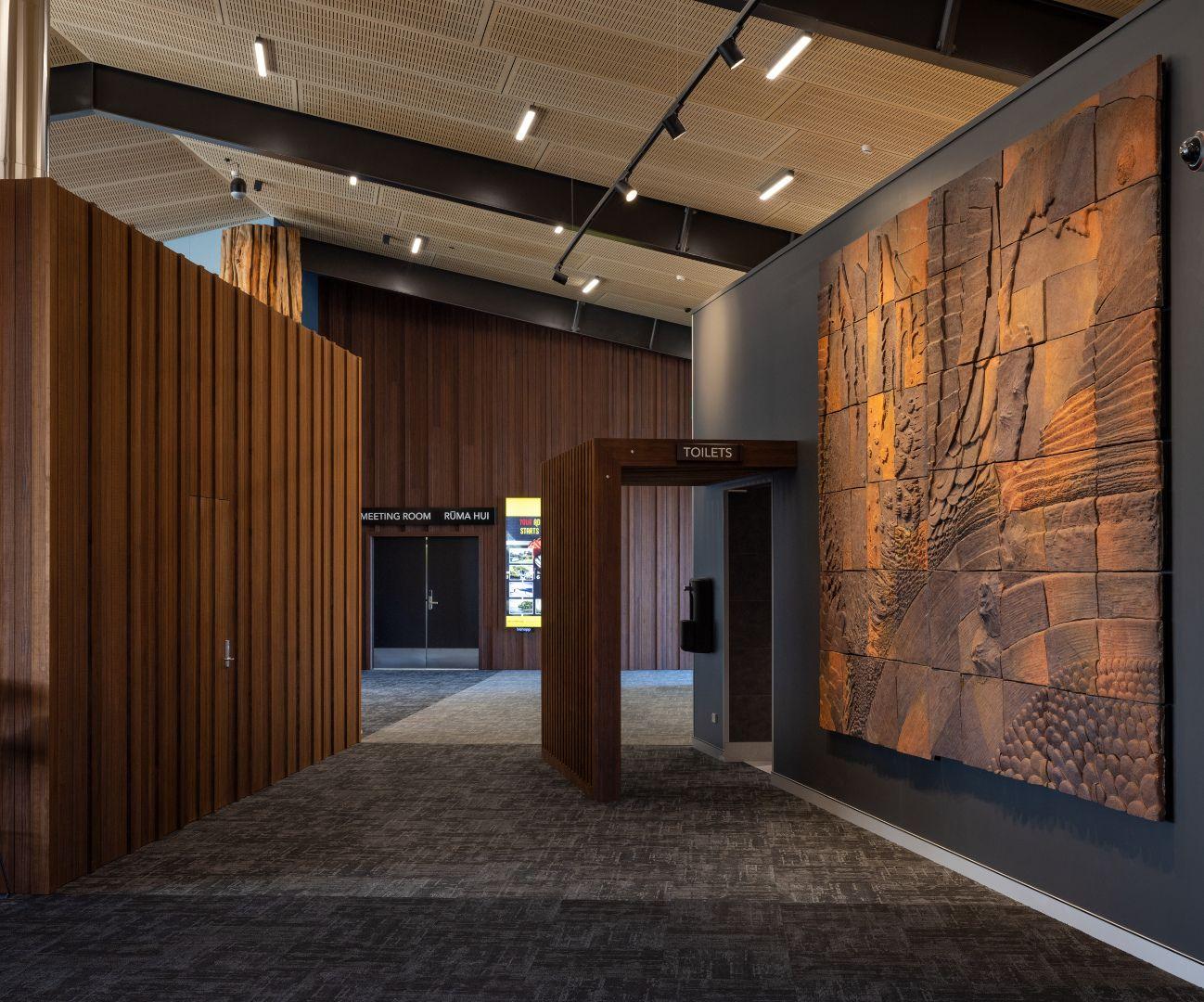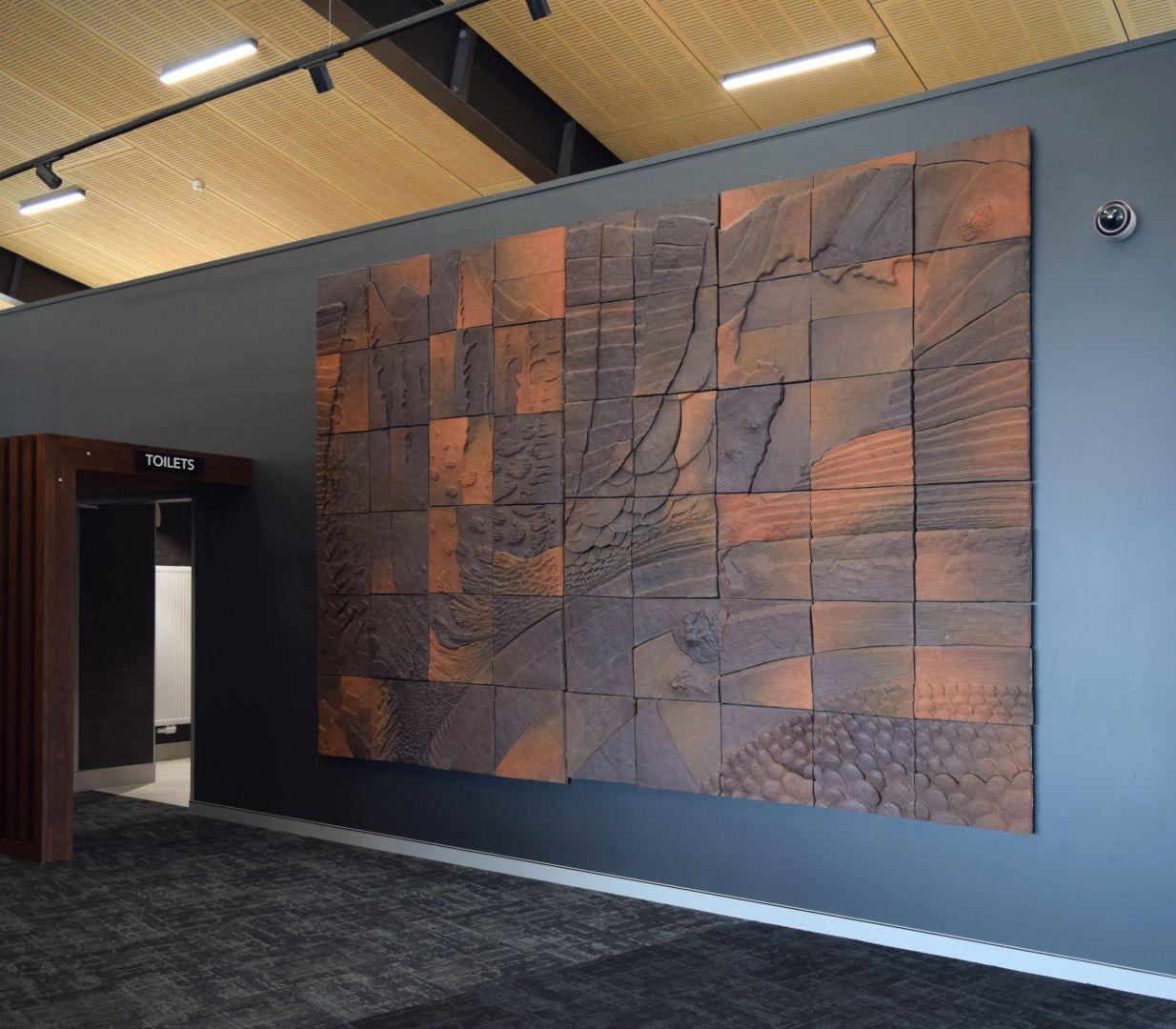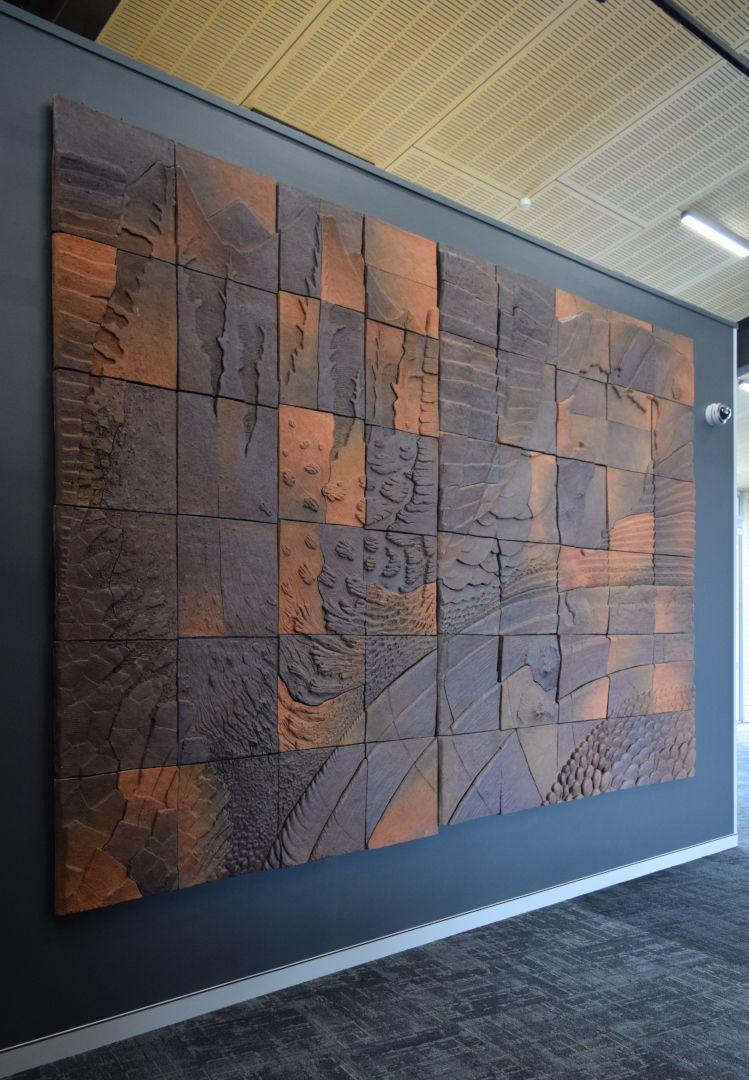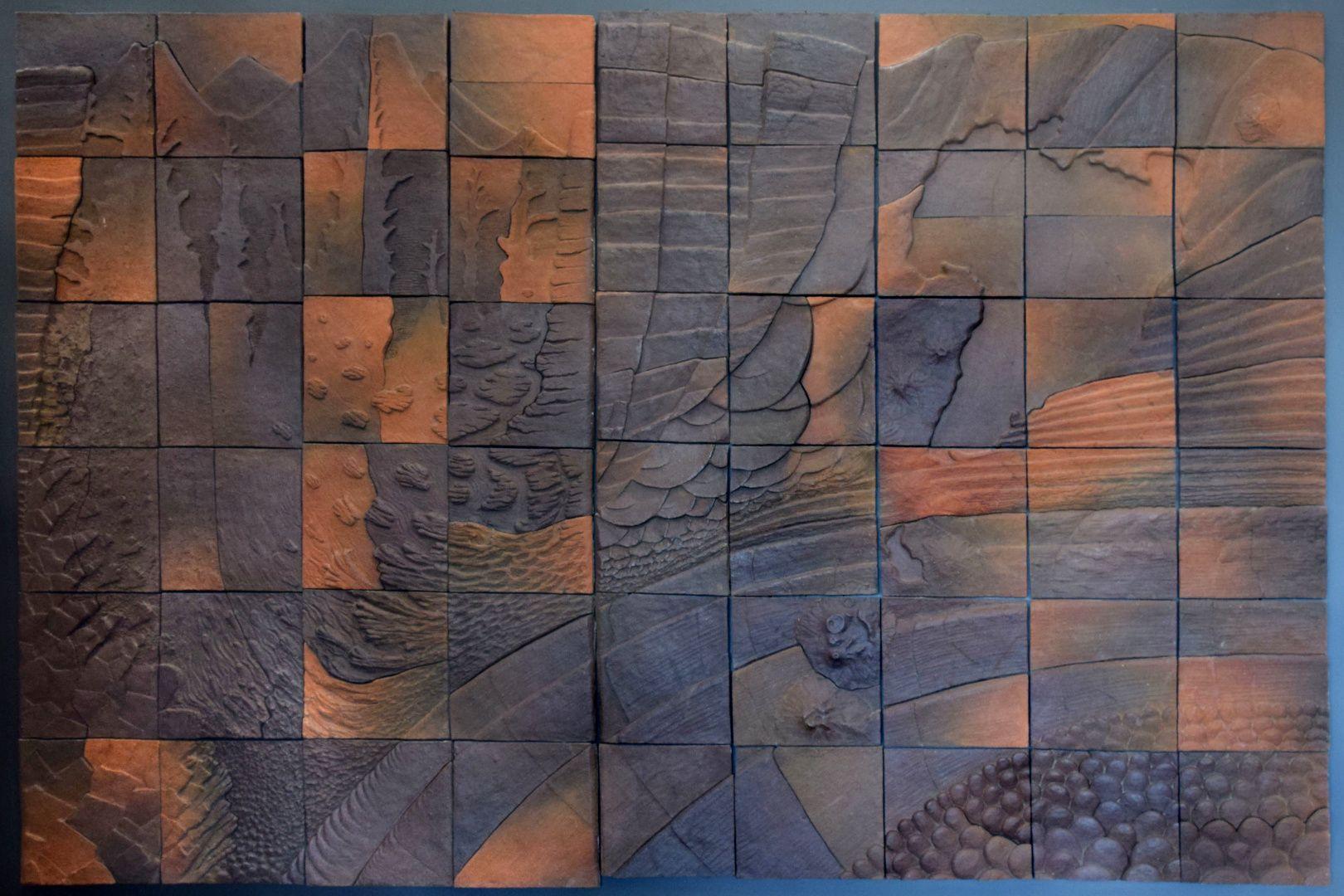Volcanic Plateau
Barry Brickell
Type
- Bas-relief
- Mural
Medium
- Ceramic
- Terracotta tile
Dimensions
- W4320 x H2880mm (54 individual tiles, each H480 x W480mm).

Barry Brickell, ‘Volcanic Plateau’ (1985), Taupō Airport, 2023
Image: Taupō Airport Authority




- DETAILS
- MAP
Description
This mural is composed of 54 terracotta panels using different clays to achieve colour gradations. It was commissioned by Tauranga-based firm Denniston & Hodgson (presumably at the behest of the New Zealand Post Office) for installation in the Taupō Post Office.
Noting the centenary of “Mt. Tarawera’s devastating volcanic eruption of 1886”, Brickell’s mural was inspired by the geological features of the North Island’s volcanic plateau (Plastic Memories, p.20). The right hand-side shows the mountain and lake and at the bottom, the core of the earth. On the left is the core with magma rising to the mountains. The mural could be said to embody Brickell’s theory of volcanology and plate tectonics.
Later, the privatisation of Government-owned Post Offices (into Post Shops) led to renovation plans for the Taupō Post Office. The mural was removed, and reinstalled at the entrance to a carpark site further up the road. Brickell was not informed of this move, and, had he been consulted, would have requested the mural be kept intact as a whole rather than separated into two pieces as it was.
In 2014 the owner of the site housing the mural announced plans to develop the site. Local businessman and arts advocate Chris Johnston asked to be kept informed of any plans to demolish the work, however was surprised one morning with a phonecall informing him that bulldozers were on site. The owner had factored in a $4,000 contingency to remove and store the panels, but had deleted this from the budget, meaning the work was destined for landfill. Johnston stepped in with the funds and saved the panels, and was later reimbursed by the council.
The panels stayed in council storage for several years, awaiting funds for conservation work. During this time, as part of the ‘Reconceptualising Early Childhood Conference’ held at the Wairakei Resort, curators Janita Craw & Victoria O'Sullivan invited conference delegates to take a ride to see the artwork in its temporary storage as part of a three-day exhibition, Allegory & Reification (2016).
In 2019 council budget was allocated for conservation work, and the mural was relocated to Auckland where Elizabeth Yuda embarked on a journey to remove the tiles from the heavy concrete slab they had been glued to.
As chair of the Taupō Airport Authority, Chris Johnston successfully negotiated for the mural to be factored into plans for a new airport terminal. Shelter Architects designed a wall within the building that could hold the weight of the work, and Yuda designed a hanging system to allow for the future removal of individual tiles, should it be required. The work was reinstalled in the new Taupō Airport building on 14 December 2022.
The work was described by Brickell in a letter he sent to the Taupō Museum on 5 May 2007. He expressed a desire for this text to be displayed with the work:
This mural is made of hand-modelled terracotta tiles from mostly Coromandel clay and sand and firedin a wood-fired kiln
The mural, though in two parts, has a continuous theme. It depicts movement deep down in the earth under the Taupo region. It represents a vertical section west-to-east through the earth’s crust, but on the right-hand panel there is superimposed an outline of Lake Taupo and the main volcanoes of the area.
Geologists nowadays see the Earth’s crust as a mosaic of gigantic plates, the edges of which are actively grinding against and slipping across one another. In the Taupo-Rotorua thermal zone the western edge of the Pacific plate is gradually slipping under the eastern edge of the Indian/Australian plate and slowly forcing it up at an angle.
In the mural the thick Pacific plate is seen emerging on the r/h edge and curing downwards into the bottom edge off the l/h panel. The now uplifted ancient sandstone rocks of Hawkes Bay forming the eastern edge of the Indian/Australian plate, are shown in the upper half of the r/h panel. The Earth’s core material can be seen below the Pacific plate..
The intense pressure of the plates on each other creates a great heat, which partly melts the rocks to form a vast reservoir of magma (molten rock). This is shown in the l/h panel. From time to time the magma wells up through fractures in the rock above to form volcanic cones, depicted along the top of the panel. (for those interested in geology the various types of magma are identified: An - andesite; Ba - basalt; Di - diorite; Rh - rhyolite), Also the plate rocks, Sandstone and Greywacke.
The mural is an artist’s attempt to portray current theories about the geological formation of the Taupo regions, and should not be taken as a scientific illustration. I have used clay simply as another might use paints, to create a design-picture.
Barry Brickell
Coromandel
1985-1986
See also:
- ‘Labour of love saves local art heritage’,Summer Times, Radio New Zealand, 17 January 2023.
- Brickell Barry. ‘Plastic Memories : 38 Years of Story-Telling in Clay’. Driving Creek Press 2013.
